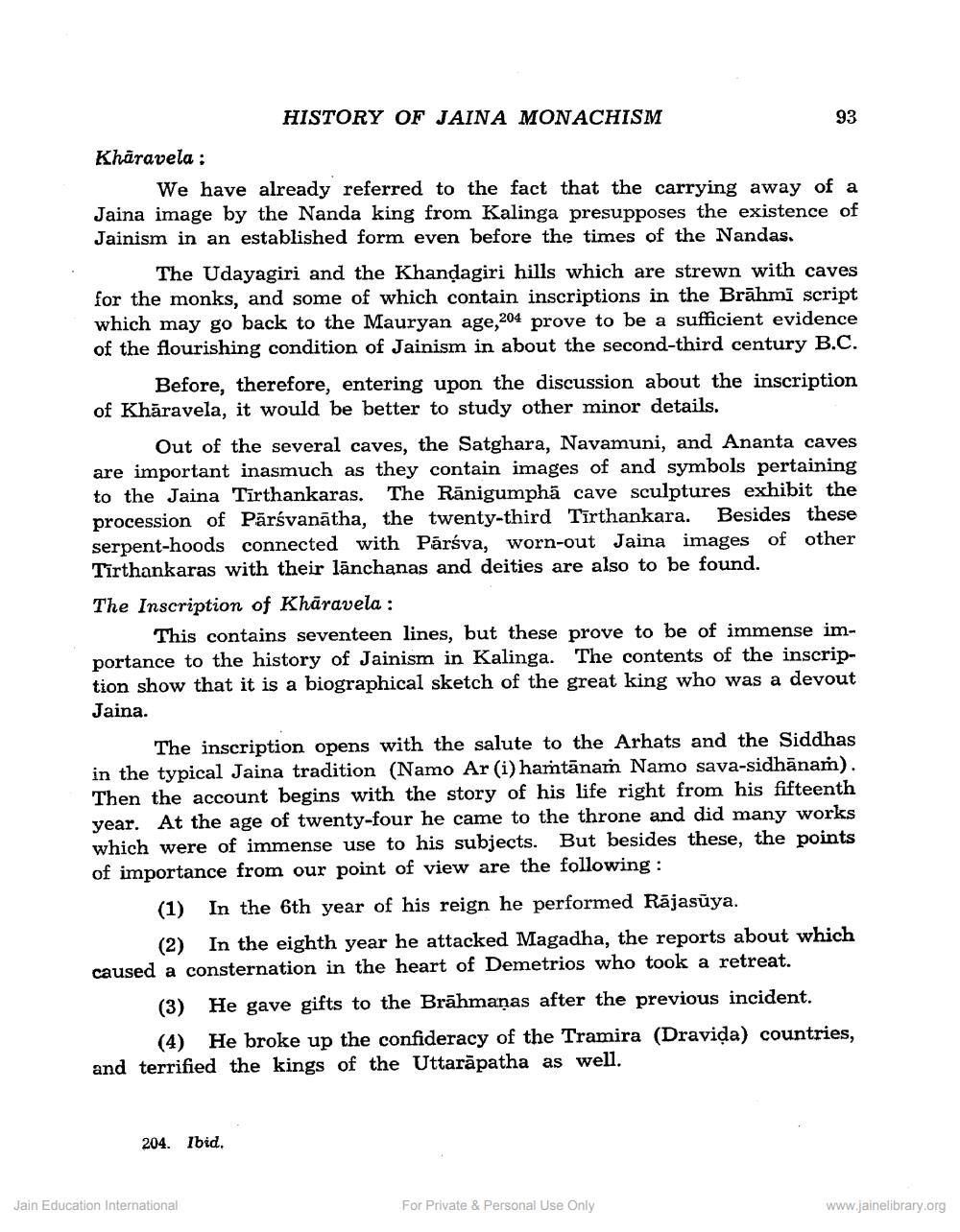________________
93
HISTORY OF JAINA MONACHISM Kharavela ;
We have already referred to the fact that the carrying away of a Jaina image by the Nanda king from Kalinga presupposes the existence of Jainism in an established form even before the times of the Nandas.
The Udayagiri and the Khandagiri hills which are strewn with caves for the monks, and some of which contain inscriptions in the Brāhmi script which may go back to the Mauryan age,204 prove to be a sufficient evidence of the flourishing condition of Jainism in about the second third century B.C.
Before, therefore, entering upon the discussion about the inscription of Khāravela, it would be better to study other minor details.
Out of the several caves, the Satghara, Navamuni, and Ananta caves are important inasmuch as they contain images of and symbols pertaining to the Jaina Tīrthankaras. The Rānigumphā cave sculptures exhibit the procession of Pārsvanātha, the twenty-third Tīrthankara. Besides these serpent-hoods connected with Pārsva, worn-out Jaina images of other Tirthankaras with their lānchanas and deities are also to be found. The Inscription of Khāravela :
This contains seventeen lines, but these prove to be of immense importance to the history of Jainism in Kalinga. The contents of the inscription show that it is a biographical sketch of the great king who was a devout Jaina.
The inscription opens with the salute to the Arhats and the Siddhas in the typical Jaina tradition (Namo Ar(i) hamtānam Namo sava-sidhānam). Then the account begins with the story of his life right from his fifteenth year. At the age of twenty-four he came to the throne and did many works which were of immense use to his subjects. But besides these, the points of importance from our point of view are the following:
(1) In the 6th year of his reign he performed Rājasūya.
(2) In the eighth year he attacked Magadha, the reports about which caused a consternation in the heart of Demetrios who took a retreat.
(3) He gave gifts to the Brāhmaṇas after the previous incident.
(4) He broke up the confideracy of the Tramira (Dravida) countries, and terrified the kings of the Uttarāpatha as well.
204. Ibid.
Jain Education International
For Private & Personal Use Only
www.jainelibrary.org




